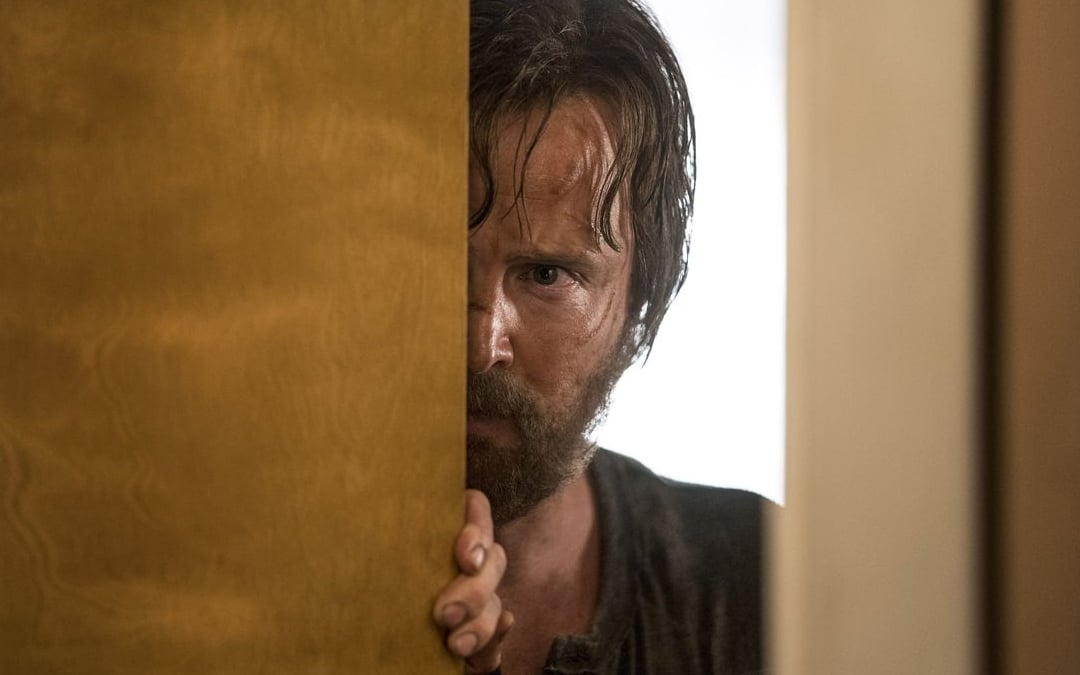All the Write Moves: 'Castle Rock'
August 27, 2018
The notion behind the recently debuted Hulu series Castle Rock is enticing, because series creators Sam Shaw and Dustin Thomason invented new characters and stories that exist within the fictional universe of novelist Stephen King. The series title is the key, since King has told many stories in and around the imaginary town of Castle Rock, Maine. The series has King’s blessing, so purists need not worry that the project tramples on his authorial integrity.
While it would be terrific to report that Castle Rock is as engrossing and inventive and scary as the best King books, that’s a high bar to vault, and besides, the series is in early days, so it will evolve as it goes along. (The show received a second-season pickup shortly after the first episodes dropped in late July.) For now, it’s fair to say that Castle Rock represents a smart attempt at complicated TV horror for grownups.
Cleverly, much of the action in the first season revolves around Shawshank Prison, the setting of King’s short story Rita Hayworth and Shawshank Redemption, as well as Frank Darabont’s beloved 1994 movie adaptation of the story, The Shawshank Redemption. This storytelling choice is clever is because it ties Castle Rock to King’s writing without tethering the series to a particular tale; the self-contained narrative in Darabont’s movie concludes years before the earliest events in the first two episodes of Castle Rock.
That’s one lesson writers can derive from Castle Rock—when playing in an established fictional universe, situate new story in familiar places without creating expectations of seeing familiar characters. This steers Castle Rock clear of a problem that has vexed the Fox series Gotham, which is about Gotham City during the childhood of the future Batman, Bruce Wayne, as well as Syfy’s Krypton, which is about the Superman universe before Superman emerges.
What other smart choices did Castle Rock’s creators make? Read on . . .
Words Get in the Way
The teaser of the first Castle Rock episode is almost completely nonverbal, withholding dialogue until one key word at the teaser’s conclusion. In 1991, a man whom we come to know as Alan Pangborn walks through a wintry forest, poking a stick in the frozen ground at various spots and monitoring the impact the stick makes. Right away, we’re intrigued. Who is he? What is he looking for? Why is he conducting his search alone? And since we know we’re in the world of Stephen King, what creepy thing is hidden just out of view?
Eventually Pangborn’s stick strikes something beneath the snow, so he frantically digs—and uncovers the corpse of a deer. Even without knowing this character, we can read his reaction as profound disappointment. The deer isn’t what he’s after. Yet we, the audience, add to the moment, contributing our own feelings of dread, revulsion, and sympathy, the same feelings we would experience upon encountering a dead animal in everyday circumstances. The discovery of the deer gets us involved in the search.
Finally Pangborn reaches the edge of a frozen lake, and as if by magic (or some other supernatural force), something appears on the other side of the lake. Scratch that. Someone appears. A young boy. Pangborn knows him, calling out the boy’s name: “Henry?” So much about this exchange is left to our imagination. Is Henry the object of Pangborn’s search? How does he know the boy? What lead Pangborn to believe Henry would be in the woods?
In just a few minutes of screen time and with only one word of dialogue, the show hooks us with emotion, fear, and mystery—three of the most powerful tools in King’s storytelling toolbox. Not only does the first scene of Castle Rock work as a great come-on for a series, it reassures viewers that the show’s creators want their meditation on Stephen King to feel the same as King’s work.
Takeaway: Opening scripts nonverbally maximizes cinematic impact.
There Will Be Blood
Although not all of King’s stories are gruesome, he is of course closely associated with the horror genre, and Castle Rock is a horror show. Therefore the onus was on the show’s creators to establish a contract with audiences by showing something nasty early in the first episode. Castle Rock delivers with a scene that’s as poignant as it is revolting—with the extra kick of featuring a notable actor from the annals of TV fantasy.
Cutting from the 1991-set teaser to the present day, Castle Rock introduces us to amiable Dale Lacy, played by Terry O’Quinn of Lost fame. He seems like a kindly older man, preparing breakfast in bed for his wife, Martha Lacey (Frances Conroy), on the day of his retirement. (The revelation of the job from which he’s retiring comes later.) After sharing several sweet moments with Martha, Dale drives off, seemingly for his last day at work, but in fact for a different destination.
Dale pulls up his car to the edge of a cliff in a forest somewhere, ties one end of a rope to a tree, knots the other end into a noose that he wraps around his neck, and sits behind the wheel of his car. Once he hits the gas and drives off the cliff, the rope snaps and decapitates him while the car falls into a ravine. Then the camera reveals something on door of Dale’s car: the logo for Shawshank Prison.
Like the teaser, this scene combines emotion, fear, and mystery, thus accomplishing many things: a) merging with the teaser to begin the process of establishing an overall series tone; b) offering the show’s first overt step into the existing King universe; and c) promising more gore in the future.
Takeaway: When writing a genre script, satisfy the specific expectations of your chosen genre quickly.
In the Dark
Without giving away too much of the show’s main story, a major moment in the first episode is the discovery of a man hidden in a part of Shawshank Prison long thought abandoned—the ultimate form of solitary confinement. Unraveling the man’s identity and the reasons for his imprisonment involves storytelling that sprawls across the first season, though the show’s creators give viewers hard facts to ground the storytelling within the first two episodes. It’s a mystery, but we’re provided with a framework for solving the mystery.
However, the larger point here relates to physical setting. The mystery man is found in a remote chamber beneath the prison. He is quite literally a secret buried inside Shawshank. And that’s how the show’s creators establish the contrivance of the first season (and, one assumes, the series as a whole)—let’s take a place that readers/viewers know from King’s previous work and set a new story that feels somewhat like King’s other stories inside that specific place.
For purposes of this examination of Castle Rock’s most effective screenwriting techniques, it’s irrelevant whether the showrunners stick the landing. What matters is they picked a good starting point. Inasmuch as one can generalize about King’s work by saying that his favorite subject is secrets in the dark—malevolent forces churning inside otherwise normal people, supernatural properties pulsing through seemingly innocuous places—the makers of Castle Rock drew water from the right well. Poisoned water, naturally.
Takeaway: When working from source material, internalize the source material instead of just superficially extrapolating characters and plot.
Written by: Peter Hanson
Peter Hanson is a Los Angeles-based writer, filmmaker and teacher. He directed the screenwriting documentary Tales from the Script, and he teaches at Pepperdine University and UCLA Extension. He provides script consulting at www.GrandRiverFilms.com.



